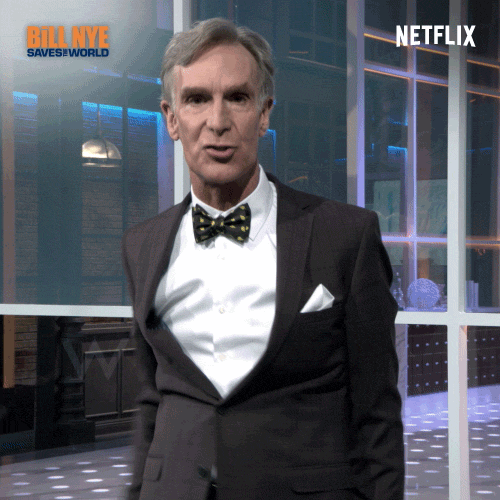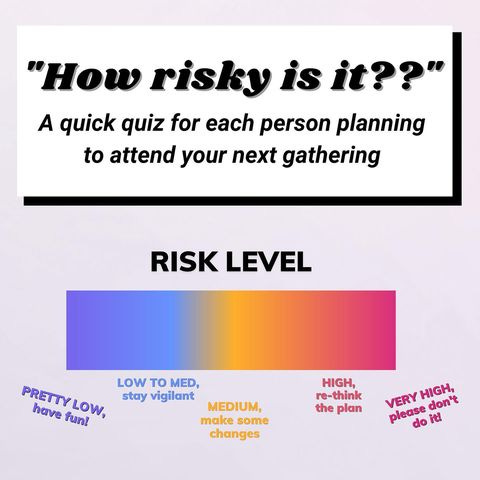I’ve talked to many of you who are planning holiday events per “2019-normal.” You have shared a desperate need to recharge. The time to be spent with loved ones is critical to strengthening the inner scaffolding that will hold you up through the next few weeks to months. I respect the honest conversations about the risks you are willing to accept. I understand and I see you.
I’ve also talked to many of you who are opting out. The stress of altering the health of a fragile family member or new baby is too much to bear, so the sadness of letting go is all that is left. Saying “no” feels disrespectful to the traditions that form our life’s rhythm. The sacrifice seems big and the consequences absolute. The emotional drain is leaving you listless. I understand and I see you, too.
There are no winners here. We are on the precipice of yet another phase of our lives where there is no roadmap. There are no guideposts. This is exhausting. For everyone.
So, the intent of this week’s letter is not to create a list of “Thou shalt not’s.” Rather, I want to remind everyone that all of our behaviors are a choice. Some choices will put us in harm’s way, others will protect us from getting sick. I’m here to encourage you to make choices that will offer protection for your family and our communities.
This is the first and most important thing we can do this season is be brave with our conversations. Everyone is sensitive, tired, and emotional. Many of us are carrying secret struggles. Let’s gather perspectives without making assumptions and listen to everyone’s opinion. Plan to work together to protect the most vulnerable. And if these conversations don’t lead to compromise, support each other’s decision without resentment or anger. We all deserve a chance to make this work in the best ways we know how.
In an uncontrolled global Pandemic, the risk of getting sick after gathering with others will never be zero. The healthiest choice is staying home and celebrating with your own household.
But, If you are choosing to host others:
Choose a start and stop time. Keep the gathering as brief as possible.
Keep the guest list small.
Wear a mask and ask guests to wear masks. (Outside and inside.)
Stay outside as much as possible.
Invest in outdoor heaters, blankets, or fire pits.
Consider outdoor games and projectors.
Provide a clean bathroom for guests to use and keep the fan running.
Ensure your furnace filters are clean or recently replaced.
Keep guests out of the kitchen. Limit food sharing, and have one person plate the food for everyone.
Use all the available space to spread out during mealtime, including outside areas. Only eat near other people who live in your house.
Supply eco-friendly, compostable dishware, drinkware, and utensils.
If someone in your home is not well, call it off. If someone in your home has been recently exposed, call it off. Waiting for the results of a test? Call it off. Yes, even the day of.
After your guests leave:
Open all windows in the home as you can to fully exchange the indoor air.
Bundle up. Then, go for a long walk or car ride while your house airs out.
Leave the bathroom door shut with the fan on/door closed for a day. You can clean it later.
Wash all commonly used surfaces including door handles, light switches, TV remotes, game controllers.
Run all non-disposable dishware in a sterile dishwasher cycle.
If you are choosing to attend a gathering:
Limit high-risk activities for all family members as long as you can prior to the event.
Travel by car, if you are able.
Dress for the weather, anticipate spending time outdoors.
Bring an outdoor chair and outdoor games for the kids.
Have a projector, heater, firewood you can bring? Offer it up!
Keep a mask on unless you are drinking or eating.
If you are bringing food, bring items already pre-portioned and easy to serve.
Watch the alcohol.
Wash your damn hands.
If you or someone in your home is not feeling well, do not go. If anyone has been recently exposed, do not go. If someone is waiting for test results, do not go. Yes, even on the day of.
Need some more tools and resources for decision-making help? Here are my faves.
Dr. Megan Ranney and Dr. Liz Goldberg are two super-smart scientists who developed the COVID Risk App. I like this calculator because it places your risk within your local community data. Plus, it helps to walk you through practical steps to decrease the chance you will get sick in the activity you wish to pursue. You can also follow them on Twitter for evidence-based updates about the global Pandemic.


Dr. Samantha Yammine is Science.sam on Insta. She has put together a flow-chart-style risk assessment tool that could answer some questions.
Finally, if want to know your “microCOVID,” use this calculator.
Until next week, make safe choices. Show compassion. Practice flexibility. And be kind to one another.
What’s next:
We’re going to shift away from all things COVID for an update on CBD in kids, learn about probiotics from a few special guests, and answer some community questions. Have a question and you want my take? Just reply to this email!
Thanks for reading all the way through. If you found this helpful, please share it with someone who makes the best pie. Did someone share this with you? Here’s more about me.







Well worded for all to understand and of course I will send it on to others right away. This may get them to rethink their holiday plans and make it safer for all their contacts. Thank you so much!